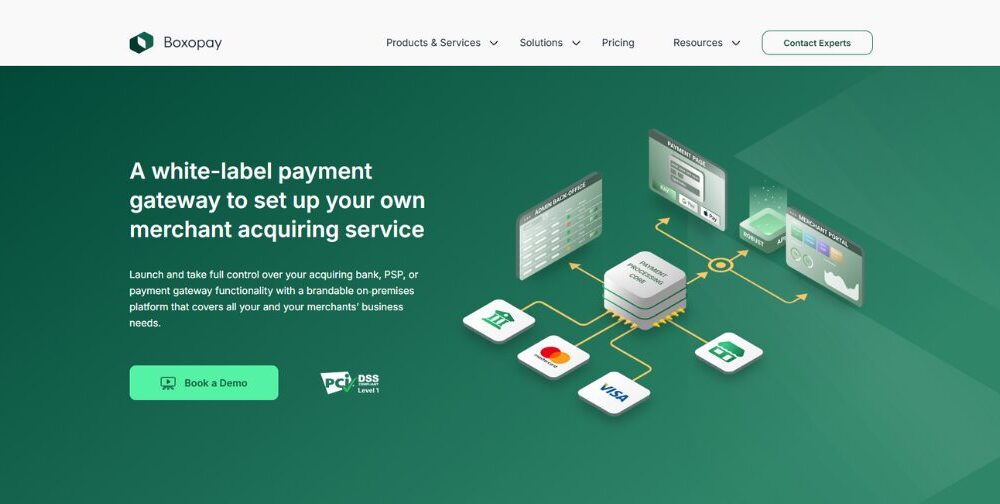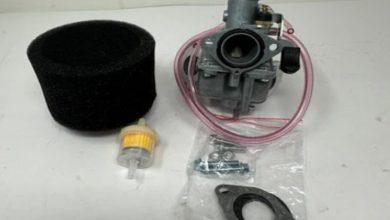Why Fintechs Pair a Modular Payment Gateway with Issuer Processing (BaaS)

As volumes grow and you add new markets, a single-provider setup starts bending in quiet ways. The traffic mix changes: issuers apply different risk appetites, SCA/3DS rules vary by scheme and regulator, and latency spikes at the worst moments. What looked stable in one region begins to leak approvals elsewhere. Many of those declines aren’t hard at all — they’re soft declines tied to timing, policy, or where a request landed. The practical issue isn’t that your vendor is “bad”; it’s that a monolith gives you too few controllable knobs when rules diverge. The safer, faster path is a controllable plane split into two layers: a gateway that owns routing, 3-D Secure (3DS) policy, retries, idempotency, and observability; and issuer processing (BaaS) that governs card lifecycle, limits and velocity rules, and network tokens. With that split you tune outcomes by BIN, region, and flow instead of hoping one global configuration holds. The result is shorter time-to-market and lower scheme risk without rebuilding a processor from scratch.
Gateway core: routing, 3DS policy, retries, observability
At its core, the gateway decides where and how an authorization travels and when to add or avoid extra authentication. In 3DS flows, the aim is targeted friction: challenges when risk signals warrant it and exemptions where policy allows (TRA, low-value, trusted beneficiaries/allowlist). See the EMV 3-D Secure 2.x overview for the model; in practice, policy belongs next to routing so both can change together as your mix shifts.
Routing needs to be granular and health-aware: rules by BIN, region, scheme, and MCC; latency and error-rate thresholds that trigger graceful fallback to a secondary acquirer; and per-path timeouts that reflect real network conditions. That’s how you prevent avoidable failures when one path degrades or a regional acquirer tightens controls.
Retries must be soft and timed — never spammy. Use short duplicate-suppression windows, back-off strategies when issuer hints suggest a brief delay, and explicit idempotency keys so a second attempt can’t double-capture. Tie 3DS outcomes to retry rules: a frictionless result may justify a quick re-route, while a challenge is a signal to pause rather than hammer the same endpoint.
Idempotency and timing windows only work if you can see what happened. Normalize decline reason codes, track challenge vs frictionless rates by acquirer and BIN, and correlate auth requests, 3DS results (ARes/CRes), and webhook completions in a single trace. With that observability, teams can separate avoidable friction from genuine risk, tune policies, and prove improvements.
Finally, network tokens reduce challenges and stabilize card-on-file and recurring flows because lifecycle updates (PAN changes, expiry refresh) happen behind the scenes. For teams that need routing, 3DS policy, and telemetry in one tunable layer, a payment gateway platform for fintechs provides the control plane without waiting on a vendor roadmap.
Issuer processing layer: lifecycle, controls, and clear handoffs
Issuer processing is the layer that owns the card itself and the rules attached to it. It exposes the lifecycle primitives—issue, activate, suspend, resume, close—and guarantees that every state change is auditable and reversible under policy. This is where PAN/token provisioning happens, status flags are enforced, and account-level attributes (program, BIN, region) are applied consistently across instruments and channels.
Controls live here, not in the gateway. Velocity policies (per-card, per-account, per-MCC), hard and soft spend limits, merchant allowlist/stoplist, region and currency filters, even time-of-day rules—these need to be set and versioned as first-class product features, then evaluated in real time before and after auth. In practice, teams expose these through a BaaS API for issuer processing so product managers can ship and iterate on policies without touching the core processor.
Network tokens tie the lifecycle together. When cards are tokenized with the schemes, PAN changes and expiry refreshes propagate automatically, which lowers 3DS challenges and keeps card-on-file and recurring flows stable. The processing layer should maintain token-to-PAN mappings, apply the same controls to tokenized credentials, and publish status webhooks for everything that matters: card state transitions, limit hits, token (re)provisioning, and post-auth outcomes that affect future decisions.
Clear roles prevent compliance surprises. The BIN sponsor owns scheme membership and regulatory obligations; the program manager owns product design and day-to-day controls; the processing platform operationalizes both: it enforces policy at decision time, records evidence (who changed what, when, and why), and exposes audit logs that survive provider rotation. Disputes and chargebacks also start here—the issuer side defines windows and evidentiary rules, while the gateway supplies telemetry (auth traces, 3DS results) to build cases.
Most importantly, handoffs to the gateway are explicit: the processing layer publishes current card status and policy outcomes; the gateway uses them alongside risk signals to choose the right path and 3DS posture. With this split, teams add controls without re-implementing a processor, and they can prove why an authorization was allowed, challenged, or declined.
Handoffs & compliance
The clean line between layers is: the gateway decides how an authorization travels (route, 3DS posture, retries), while issuer processing decides whether the instrument is usable at all (card state, limits/velocity, token status). Under SCA/PSD2, the gateway owns the 3DS policy and executes challenges or exemptions based on signals and merchant context; the issuer’s ACS still has the final say on challenge outcomes, and the issuer decision engine applies program rules before approving. That keeps risk controls close to the card, and orchestration close to the network.
Tokenization follows the same split: the processing layer provisions and maintains network tokens and PAN mappings; the gateway consumes tokens and forwards scheme cryptograms without holding raw PAN — containing PCI scope by design.
Chargebacks and disputes rely on crisp evidence trails. Issuer processing holds product policy history (who changed what, when), card lifecycle events, and limit evaluations; the gateway contributes the network side: auth traces, acquirer responses, and 3DS artifacts (AReq/ARes, CReq/CRes). Correlation IDs across both layers let you reconstruct a case without guesswork.
Compliance is mostly an architectural choice. Keep PAN inside the processing vault, prefer hosted fields/redirect or network tokens at the gateway, and you minimize PCI scope and secret sprawl. Immutable audit logs, synchronized clocks, and webhook/event signatures make actions provable: you can explain why a transaction was allowed, challenged, or declined—and do it without widening your PCI footprint.
With the split codified, the knobs that matter shift by market—routing, 3DS posture, retry windows, token use.
Snapshots
Market expansion isn’t symmetric: the same stack that runs smoothly in one region meets different issuer expectations, 3DS posture, and acquirer behavior in another. The snapshots below highlight which knobs move—routing, challenge policy, retry windows, and token use—and how the gateway/issuer split lets you adapt per market without re-architecting.
EU → MENA
A team used to EU traffic leans on SCA exemptions (TRA, low-value, MIT) and keeps most flows frictionless. When expansion reaches MENA, the mix flips: many issuers expect a 3DS challenge for first-time or cross-border spend, and approval odds improve when you ride local acquirers in the UAE or KSA instead of a single cross-border route. Policy needs per-BIN rules that prefer challenges for specific issuer ranges and relax to exemptions only after trust signals (repeat customer, stable device, recent on-us approvals). Retries should be soft and health-aware: give the ACS challenge and post-auth webhooks time to complete before any re-attempt, and fall back to a domestic acquirer when latency or error rates spike. Result: fewer avoidable declines, predictable challenge rates, and less noise in support.
US → LATAM
US flows rarely require challenges and network tokens carry most of the load for stored credentials. In LATAM, issuers are more conservative with cross-border traffic; fraud thresholds are tighter and domestic routing often dominates approval math. Two adjustments pay off quickly. First, route eligible cards to local acquirers (e.g., Brazil/Mexico) instead of pushing everything through a single international path, and tune 3DS to challenge new devices and high-risk MCCs while letting trusted repeats pass. Second, lean on network tokens for card-on-file and recurring: lifecycle updates reduce false declines better than “hammering” retries. When a first presentment gets a soft decline, re-route to a domestic acquirer rather than repeating the same lane. Together these shifts raise auth rate without adding blanket friction.
What to measure in the next 30–60 days
Pick a short window (30–60 days) to establish baselines and prove the impact of the gateway + issuer split. Instrument the funnel end to end, slice by BIN/region/scheme, and set alert thresholds before tuning policies. The six metrics below show whether routing, 3DS posture, tokens, and webhooks are creating real lift—not just moving noise around.
- Auth rate by BIN/region/scheme. Establish a baseline per segment and set explicit targets; alert if any slice drops ≥2–3 percentage points week-over-week. Compare acquirer paths for the same BIN ranges to confirm routing gains are real, not seasonal.
- 3DS challenge rate and frictionless share (by method). Track per issuer and acquirer. Flag outliers (e.g., challenge rate >10pp above cohort) and test policy tweaks (TRA, low-value) to move traffic to frictionless where risk allows.
- Recovered soft declines. Measure the share of approvals achieved after timed retries or a re-route, with idempotency enforced. Break down by issuer hint/decline code to learn which reasons respond to a second path vs a delay.
- Refund/settlement latency and webhook reliability. Monitor p95/p99 times from event to confirmation; missing/late webhooks should trend toward zero. Add synthetic checks for webhook endpoints and reconcile async statuses nightly.
- Network token share in CoF/recurring. Track token penetration and the approval delta vs raw PAN for the same cohorts. Aim to raise token share steadily and verify it reduces challenges and expiry-related declines.
- Time-to-market for a new acquirer/rule. Log calendar days and engineering hours from decision to live. Target: policy changes ship same-day without a deploy; new acquirer enablement measured in days (not quarters) with rollback defined.
Conclusion
In practice, the win isn’t picking a “perfect” provider; it’s building an adjustable control plane. Pair a modular gateway with issuer processing and you get real knobs: route by BIN/region/scheme, set 3DS posture and retry windows, while the issuer layer governs lifecycle, limits, and network tokens. Clear handoffs keep PAN in the vault, shrink PCI scope, and leave an audit trail that explains every approval, challenge, or decline. The outcome is measurable: higher auth rates, fewer avoidable challenges, steadier recurring flows, and a shorter path to shipping new rules or acquirers. Control shifts from vendor roadmaps to your operating playbook.

Source: Why Fintechs Pair a Modular Payment Gateway with Issuer Processing (BaaS)




